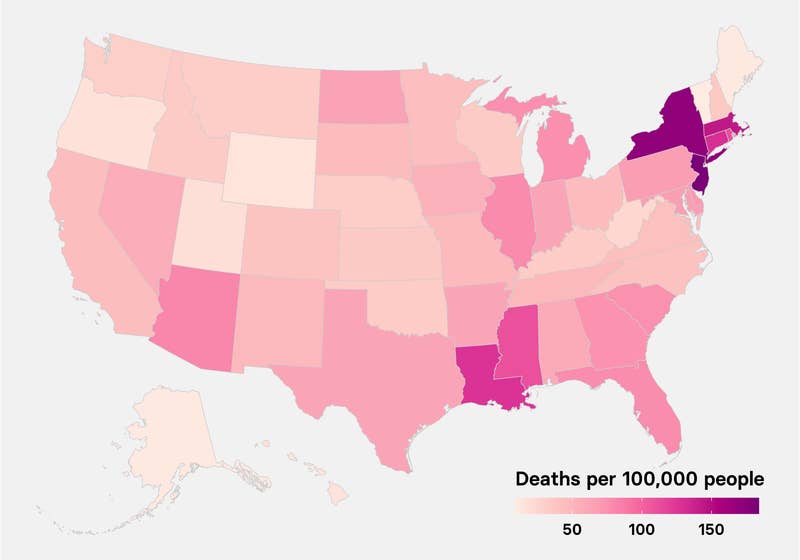2020/10/31
©Miami Herald

Democratic presidential nominee Joe Biden speaks during a drive-in campaign rally at Northwestern High School in Flint, Michigan, on Saturday, Oct. 31, 2020.
- Drew Angerer/Getty Images North America/TNS
MIAMI — Andres and Miguel left Cuba, the only home they had ever known, in spring 2019. Cuban police had told Andres, a factory employee, and Miguel, a farmer, that they would be “disappeared” and jailed if they didn’t support the government or participate in political activities.
So they flew to Central America, and walked and bused and swam their way up to Mexico. The pair lived for two months in the state of Chihuahua, until they were able to seek asylum at an American port of entry at the Ciudad Juarez/El Paso border two months later. Since then, they have cycled through detention centers across the southern United States for almost 18 months.
Although Andres and Miguel were found to have a credible fear of political persecution, neither of their asylum cases were granted. Instead, they were slated for deportation over six months ago, but have not been returned to Cuba.
“We entered legally, we did not violate anything. We entered through a process controlled by the United States,” said Andres.
At the request of their lawyers, The Miami Herald is withholding their real names.
The pair does not know when or where they will be released from U.S. custody, and are among the 1,800 Cuban nationals who are serving years in confinement as they await deportation. They describe conditions in the Louisiana detention center as difficult. Rainwater can flood the facilities, becoming “like a river.” The food is “bad.” The beds are too close together to practice social distancing.
“Everyone is infected,” said Miguel, who has a respiratory condition and was in solitary confinement after contracting COVID-19. Meanwhile, Andrés has lost over 20 pounds in almost two months, and told the Herald he hadn’t received adequate medical treatment.
“I came to seek freedom from a dictatorship and look what I have found here,” said Andres.
While President Donald Trump’s hard-line stance against repressive, Latin American governments has included harsh condemnations and sanctions, his administration’s immigration system has turned away or detained thousands of people fleeing them. Critics say his denouncement of socialism and communism abroad on the campaign trail and throughout his presidency stands in sharp contrast to his asylum and immigration policies, and could harm him at the polls.
Throughout the course of his administration, Trump has presented himself as a leader committed to bringing democracy to Latin America and ousting strongmen leaders. His administration has imposed a slew of financial and travel-related sanctions on state-run companies and high ranking officials as well as state-affiliated individuals across Cuba, Venezuela, and Nicaragua. The president has led a so far unsuccessful campaign to oust Nicolas Maduro from power in Venezuela, and signed a 2018 bill to reduce the ability of Nicaragua to take out loans through international financial institutions and banking companies.
But for Nicaraguan, Venezuelan, and Cuban citizens seeking asylum in the United States, the panorama has become more challenging in the last few years. According to previous Herald reporting, between October 2019 and March 2020, over half of the asylum petitions filed by Cuban and Nicaraguan asylum seekers were denied, and 45% of asylum claims made by Venezuelans were not granted.
The “wet foot, dry foot” policy, which allowed Cubans who made it to U.S. soil to become permanent residents, was terminated at the end of the Obama administration. Trump has not to this date reversed the move, and also suspended the Cuban family reunification program.
The Trump administration also opened deportation proceedings against 25,044 Cubans in fiscal year 2019, mostly seeking asylum, at the U.S. border, according to data from immigration courts obtained by the Transactional Records Access Clearinghouse, or TRAC, at Syracuse University. And at 1,353 people, more Cubans have been removed through February of the 2020 ICE fiscal year than in 2019 or in each of the last 17 years.
In addition, news reports surfaced recently that since October 2019, at least 180 Venezuelans have been removed from the country via third-party countries through “stealth deportations.” The Washington Post reported this could potentially be a violation of American law. The administration also hasn’t granted Temporary Protected Status to more than 200,000 Venezuelans. TPS temporarily offers people fleeing political unrest, disasters or other difficult circumstances the right to work and live in the United States. While House and Senate Democrats have pushed for a bipartisan bill granting Venezuelans the special status, the move has been blocked by Republicans in the Senate.
Meanwhile, the Trump administration has attempted to terminate TPS in federal court for around 400,000 migrants, including 5,300 Nicaraguans, and has deported dissidents back to the Central American nation, ruled by an increasingly authoritarian government.
Democrats, immigration lawyers and advocates, and Trump critics say that conditions in Cuba, Venezuela and Nicaragua might be worse off now than they were before this administration. They have also been vocal on what many perceive as inconsistencies between the Trump administration’s asylum practices and his policies towards repressive governments in Latin America.
A September letter from four Democratic senators — Sens. Bob Menendez, D-N.J., Dick Durbin, D-Ill., Patrick Leahy, D-Vt., and Ben Cardin, D-Md — denounced asylum practices toward citizens of Nicaragua, Venezuela, and Cuba.
“The administration’s policies to expel and endanger refugees and asylum seekers from Venezuela, Cuba, Nicaragua, and other countries sends a message of callousness, cruelty, and disregard,” they wrote, “that feeds our adversaries’ agenda to cast doubt on the United States’ exceptional role as a beacon of freedom and democracy.”
While the majority of Cubans in Miami favor President Trump in the upcoming election, according to polls, some are distressed and angry about the president’s asylum and immigration policies towards their home country.
Manny Diaz, former City of Miami mayor and former lawyer of Elian Gonzalez’s relatives, is part of a group of prominent Cuban business leaders who want to mobilize fellow Latinos to punish Trump with their vote for his administration’s treatment of Venezuelan, Cuban, Nicaraguan and other asylum seekers.
“In the 60 years that we have been here, we have never seen Cubans who are denied entry, denied asylum, who are sent to Cuba,” Diaz told the Herald. “They put them in detention centers … and when (Trump) comes here everyone comes out with cars and honks their horns in caravans. I mean, come on.”
Diaz also said that Trump’s policies had not materialized into any concrete government changes in the island-nation.
“Cuba is not any closer to being free or seeing a democracy,” said Diaz. “What has he done for the Cubans, here in the United States or in Cuba? Absolutely nothing. A lot of blah, blah, blah because now he’s looking for Cuban votes. And I am not lending myself for that.”
Members of South Florida’s large Venezuelan community have also advocated for changes to how the Trump administration manages asylum seekers and refugees. Helen Villalonga, a Venezuelan community leader, has been advocating for TPS for Venezuelans for almost a decade.
“It is hypocritical. On the one hand, they talk about looking for a correction to the situation. On the other, they are not giving solutions to the problems of Venezuelans within the United States,” said Villalonga, whose son, a political activist, was separated from his family and deported back to his home country, where he feared for his life. He was eventually able to come back and become an American citizen.
Like Diaz, she sees some of the administration’s initiatives as a way to garner votes among Venezuelans, a Florida population that the Trump campaign has been aggressively courting.
“What hurts us the most is to use the pain of the Venezuelan people as political proselytism … . We see these leaders look for the vote and say they are going to carry out a military campaign (in Venezuela), and that all the options are on the table,” said Villalonga. “But they really aren’t giving the humane treatment and human protection that Venezuelans deserve in the United States.”
In a policy plan for the Latino community released in August, Joe Biden reaffirmed his support for granting temporary legal status to Venezuelan exiles in the U.S., noting that he would, as president, “immediately review every TPS decision made by the Trump administration and … extend TPS to Venezuelans seeking relief from the humanitarian crisis brought on by the Maduro regime.”
Although immigration-related grievances and “build-the-wall” rhetoric were an integral part of Trump’s first run for office, his reelection campaign has mostly avoided the issue — a potential consequence of polling data that shows growing support for increased immigration in the U.S.
An early October FIU survey found that while most Cuban-Americans in Miami-Dade County supported Trump’s reelection as well as his policies on the economy and healthcare, amongst others subjects, 58% did not agree with the president on immigration policies towards Cubans.
Norlys Alvarez’s story reflects how the president’s immigration track record could emerge as an electoral vulnerability. Alvarez moved from Cuba to Miami in 1995. Five years later, she relocated to Bradenton, became a naturalized citizen and registered to vote as a Republican.
But over the course of the Trump administration, as her own family became ensnared in the country’s immigration detention system, Alvarez has moved farther and farther away from her GOP roots.
In December 2017, Alvarez’s nephew, Pedro, presented himself at a U.S. Border Patrol Station in Laredo, Texas, where he told immigration agents he wanted to apply for asylum. Back in Cuba, Pedro had been briefly detained and then surveilled by police because of his connections to human-rights activists on the island.
To his family’s surprise, Pedro’s interaction with immigration authorities at the border led to a spell in immigrant detention centers that lasted over two and a half years.
According to Alvarez, Pedro was held in “appalling” conditions, and transferred to 13 different detention centers after the outbreak of the novel coronavirus in the spring. Frequent transfers are common practice at U.S. Immigration and Customs Enforcement, or ICE, even during the pandemic. Alvarez says that deficient public health measures during those transfers led to Pedro contracting a host of COVID-19-like symptoms, though he was never able to get a test to confirm his status. Pedro was only released in the summer, with his immigration case still pending, on a $20,000 bond.
Her nephew’s experience while in detention is now a prominent reason why Alvarez — a newly registered Independent voter — will break with the majority of the state’s Cuban-American voting bloc and support Biden for president.
She added: “We Cubans come from a country that for years and years has been dealing with dictatorship. When we got here we thought we were going to find peace, understanding and support. We thought human rights were respected here. But we are seeing that that’s not the case at all. The treatment people receive in immigration detention centers is abysmal.”
Could other Latino Florida residents vote like Alvarez, if they are also made aware of Trump’s track record on Cuban and Venezuelan immigrants?
Mario H. Lopez, president of the Hispanic Leadership Fund, a right-leaning organization, believes it might.
On Oct. 19, HLF launched a digital audio ad campaign that contrasts Trump’s tough-on-socialism rhetoric with his administration’s pattern of turning away asylum seekers fleeing socialist regimes.
“We think that if you are going to talk about socialism, you should also look at the victims of socialism,” Lopez said. “The president is right about socialism, but unfortunately his actions don’t match up with his words.”
In English and Spanish versions of the ads, a narrator states, “Trump says he opposes socialism, but he spurns those of us who escaped it … . our families don’t deserve to be forced back and made to suffer.” HLF’s ads will run through Nov. 3, and are expected to reach more than 750,000 Florida residents.
Potentially dulling the effect of ad campaigns like HLF’s is the fact that immigration doesn’t loom as large for Latino voters in 2020 as it did in previous election cycles.
“When you ask Latinos in Florida what are the issues that concern them the most, immigration is generally not in the top three,” said Eduardo Gamarra, who directs the Latino Public Opinion Forum at Florida International University.
“They’re concerned about healthcare, they’re concerned about jobs and the economy and recently they’ve been concerned about safety, probably as a result of the (Black Lives Matter) demonstrations and the way in which Trump has been talking about them.”
But raising the subjects of asylum seekers in detention or the deportation of Venezuelans could actually hurt the president, since it undercuts the anti-socialism rhetoric that’s come to dominate his campaign’s Latino outreach.
“There is still not a lot of awareness about this particular track record of Trump’s,” said Fernand Amandi, a partner of the Miami-based polling company Bendixen & Amandi International and Hispanic media consultant to former President Barack Obama’s 2012 campaign.
“One can’t denounce oppressive socialist regimes and at the same time not give political asylum to people who try to come to the U.S., or even deport people back to the countries they’ve fled. It’s pure hypocrisy, and I think that, if it is brought up to voters’ attention, it could really damage the Trump campaign.”
———
©2020 Miami Herald

MIAMI — Andres and Miguel left Cuba, the only home they had ever known, in spring 2019. Cuban police had told Andres, a factory employee, and Miguel, a farmer, that they would be “disappeared” and jailed if they didn’t support the government or participate in political activities.
So they flew to Central America, and walked and bused and swam their way up to Mexico. The pair lived for two months in the state of Chihuahua, until they were able to seek asylum at an American port of entry at the Ciudad Juarez/El Paso border two months later. Since then, they have cycled through detention centers across the southern United States for almost 18 months.
Although Andres and Miguel were found to have a credible fear of political persecution, neither of their asylum cases were granted. Instead, they were slated for deportation over six months ago, but have not been returned to Cuba.
“We entered legally, we did not violate anything. We entered through a process controlled by the United States,” said Andres.
At the request of their lawyers, The Miami Herald is withholding their real names.
The pair does not know when or where they will be released from U.S. custody, and are among the 1,800 Cuban nationals who are serving years in confinement as they await deportation. They describe conditions in the Louisiana detention center as difficult. Rainwater can flood the facilities, becoming “like a river.” The food is “bad.” The beds are too close together to practice social distancing.
“Everyone is infected,” said Miguel, who has a respiratory condition and was in solitary confinement after contracting COVID-19. Meanwhile, Andrés has lost over 20 pounds in almost two months, and told the Herald he hadn’t received adequate medical treatment.
“I came to seek freedom from a dictatorship and look what I have found here,” said Andres.
While President Donald Trump’s hard-line stance against repressive, Latin American governments has included harsh condemnations and sanctions, his administration’s immigration system has turned away or detained thousands of people fleeing them. Critics say his denouncement of socialism and communism abroad on the campaign trail and throughout his presidency stands in sharp contrast to his asylum and immigration policies, and could harm him at the polls.
Throughout the course of his administration, Trump has presented himself as a leader committed to bringing democracy to Latin America and ousting strongmen leaders. His administration has imposed a slew of financial and travel-related sanctions on state-run companies and high ranking officials as well as state-affiliated individuals across Cuba, Venezuela, and Nicaragua. The president has led a so far unsuccessful campaign to oust Nicolas Maduro from power in Venezuela, and signed a 2018 bill to reduce the ability of Nicaragua to take out loans through international financial institutions and banking companies.
But for Nicaraguan, Venezuelan, and Cuban citizens seeking asylum in the United States, the panorama has become more challenging in the last few years. According to previous Herald reporting, between October 2019 and March 2020, over half of the asylum petitions filed by Cuban and Nicaraguan asylum seekers were denied, and 45% of asylum claims made by Venezuelans were not granted.
The “wet foot, dry foot” policy, which allowed Cubans who made it to U.S. soil to become permanent residents, was terminated at the end of the Obama administration. Trump has not to this date reversed the move, and also suspended the Cuban family reunification program.
The Trump administration also opened deportation proceedings against 25,044 Cubans in fiscal year 2019, mostly seeking asylum, at the U.S. border, according to data from immigration courts obtained by the Transactional Records Access Clearinghouse, or TRAC, at Syracuse University. And at 1,353 people, more Cubans have been removed through February of the 2020 ICE fiscal year than in 2019 or in each of the last 17 years.
In addition, news reports surfaced recently that since October 2019, at least 180 Venezuelans have been removed from the country via third-party countries through “stealth deportations.” The Washington Post reported this could potentially be a violation of American law. The administration also hasn’t granted Temporary Protected Status to more than 200,000 Venezuelans. TPS temporarily offers people fleeing political unrest, disasters or other difficult circumstances the right to work and live in the United States. While House and Senate Democrats have pushed for a bipartisan bill granting Venezuelans the special status, the move has been blocked by Republicans in the Senate.
Meanwhile, the Trump administration has attempted to terminate TPS in federal court for around 400,000 migrants, including 5,300 Nicaraguans, and has deported dissidents back to the Central American nation, ruled by an increasingly authoritarian government.
Democrats, immigration lawyers and advocates, and Trump critics say that conditions in Cuba, Venezuela and Nicaragua might be worse off now than they were before this administration. They have also been vocal on what many perceive as inconsistencies between the Trump administration’s asylum practices and his policies towards repressive governments in Latin America.
A September letter from four Democratic senators — Sens. Bob Menendez, D-N.J., Dick Durbin, D-Ill., Patrick Leahy, D-Vt., and Ben Cardin, D-Md — denounced asylum practices toward citizens of Nicaragua, Venezuela, and Cuba.
“The administration’s policies to expel and endanger refugees and asylum seekers from Venezuela, Cuba, Nicaragua, and other countries sends a message of callousness, cruelty, and disregard,” they wrote, “that feeds our adversaries’ agenda to cast doubt on the United States’ exceptional role as a beacon of freedom and democracy.”
While the majority of Cubans in Miami favor President Trump in the upcoming election, according to polls, some are distressed and angry about the president’s asylum and immigration policies towards their home country.
Manny Diaz, former City of Miami mayor and former lawyer of Elian Gonzalez’s relatives, is part of a group of prominent Cuban business leaders who want to mobilize fellow Latinos to punish Trump with their vote for his administration’s treatment of Venezuelan, Cuban, Nicaraguan and other asylum seekers.
“In the 60 years that we have been here, we have never seen Cubans who are denied entry, denied asylum, who are sent to Cuba,” Diaz told the Herald. “They put them in detention centers … and when (Trump) comes here everyone comes out with cars and honks their horns in caravans. I mean, come on.”
Diaz also said that Trump’s policies had not materialized into any concrete government changes in the island-nation.
“Cuba is not any closer to being free or seeing a democracy,” said Diaz. “What has he done for the Cubans, here in the United States or in Cuba? Absolutely nothing. A lot of blah, blah, blah because now he’s looking for Cuban votes. And I am not lending myself for that.”
Members of South Florida’s large Venezuelan community have also advocated for changes to how the Trump administration manages asylum seekers and refugees. Helen Villalonga, a Venezuelan community leader, has been advocating for TPS for Venezuelans for almost a decade.
“It is hypocritical. On the one hand, they talk about looking for a correction to the situation. On the other, they are not giving solutions to the problems of Venezuelans within the United States,” said Villalonga, whose son, a political activist, was separated from his family and deported back to his home country, where he feared for his life. He was eventually able to come back and become an American citizen.
Like Diaz, she sees some of the administration’s initiatives as a way to garner votes among Venezuelans, a Florida population that the Trump campaign has been aggressively courting.
“What hurts us the most is to use the pain of the Venezuelan people as political proselytism … . We see these leaders look for the vote and say they are going to carry out a military campaign (in Venezuela), and that all the options are on the table,” said Villalonga. “But they really aren’t giving the humane treatment and human protection that Venezuelans deserve in the United States.”
In a policy plan for the Latino community released in August, Joe Biden reaffirmed his support for granting temporary legal status to Venezuelan exiles in the U.S., noting that he would, as president, “immediately review every TPS decision made by the Trump administration and … extend TPS to Venezuelans seeking relief from the humanitarian crisis brought on by the Maduro regime.”
Although immigration-related grievances and “build-the-wall” rhetoric were an integral part of Trump’s first run for office, his reelection campaign has mostly avoided the issue — a potential consequence of polling data that shows growing support for increased immigration in the U.S.
An early October FIU survey found that while most Cuban-Americans in Miami-Dade County supported Trump’s reelection as well as his policies on the economy and healthcare, amongst others subjects, 58% did not agree with the president on immigration policies towards Cubans.
Norlys Alvarez’s story reflects how the president’s immigration track record could emerge as an electoral vulnerability. Alvarez moved from Cuba to Miami in 1995. Five years later, she relocated to Bradenton, became a naturalized citizen and registered to vote as a Republican.
But over the course of the Trump administration, as her own family became ensnared in the country’s immigration detention system, Alvarez has moved farther and farther away from her GOP roots.
In December 2017, Alvarez’s nephew, Pedro, presented himself at a U.S. Border Patrol Station in Laredo, Texas, where he told immigration agents he wanted to apply for asylum. Back in Cuba, Pedro had been briefly detained and then surveilled by police because of his connections to human-rights activists on the island.
To his family’s surprise, Pedro’s interaction with immigration authorities at the border led to a spell in immigrant detention centers that lasted over two and a half years.
According to Alvarez, Pedro was held in “appalling” conditions, and transferred to 13 different detention centers after the outbreak of the novel coronavirus in the spring. Frequent transfers are common practice at U.S. Immigration and Customs Enforcement, or ICE, even during the pandemic. Alvarez says that deficient public health measures during those transfers led to Pedro contracting a host of COVID-19-like symptoms, though he was never able to get a test to confirm his status. Pedro was only released in the summer, with his immigration case still pending, on a $20,000 bond.
Her nephew’s experience while in detention is now a prominent reason why Alvarez — a newly registered Independent voter — will break with the majority of the state’s Cuban-American voting bloc and support Biden for president.
She added: “We Cubans come from a country that for years and years has been dealing with dictatorship. When we got here we thought we were going to find peace, understanding and support. We thought human rights were respected here. But we are seeing that that’s not the case at all. The treatment people receive in immigration detention centers is abysmal.”
Could other Latino Florida residents vote like Alvarez, if they are also made aware of Trump’s track record on Cuban and Venezuelan immigrants?
Mario H. Lopez, president of the Hispanic Leadership Fund, a right-leaning organization, believes it might.
On Oct. 19, HLF launched a digital audio ad campaign that contrasts Trump’s tough-on-socialism rhetoric with his administration’s pattern of turning away asylum seekers fleeing socialist regimes.
“We think that if you are going to talk about socialism, you should also look at the victims of socialism,” Lopez said. “The president is right about socialism, but unfortunately his actions don’t match up with his words.”
In English and Spanish versions of the ads, a narrator states, “Trump says he opposes socialism, but he spurns those of us who escaped it … . our families don’t deserve to be forced back and made to suffer.” HLF’s ads will run through Nov. 3, and are expected to reach more than 750,000 Florida residents.
Potentially dulling the effect of ad campaigns like HLF’s is the fact that immigration doesn’t loom as large for Latino voters in 2020 as it did in previous election cycles.
“When you ask Latinos in Florida what are the issues that concern them the most, immigration is generally not in the top three,” said Eduardo Gamarra, who directs the Latino Public Opinion Forum at Florida International University.
“They’re concerned about healthcare, they’re concerned about jobs and the economy and recently they’ve been concerned about safety, probably as a result of the (Black Lives Matter) demonstrations and the way in which Trump has been talking about them.”
But raising the subjects of asylum seekers in detention or the deportation of Venezuelans could actually hurt the president, since it undercuts the anti-socialism rhetoric that’s come to dominate his campaign’s Latino outreach.
“There is still not a lot of awareness about this particular track record of Trump’s,” said Fernand Amandi, a partner of the Miami-based polling company Bendixen & Amandi International and Hispanic media consultant to former President Barack Obama’s 2012 campaign.
“One can’t denounce oppressive socialist regimes and at the same time not give political asylum to people who try to come to the U.S., or even deport people back to the countries they’ve fled. It’s pure hypocrisy, and I think that, if it is brought up to voters’ attention, it could really damage the Trump campaign.”
———
©2020 Miami Herald

Joe Raedle/Getty Images North America/TNS
















